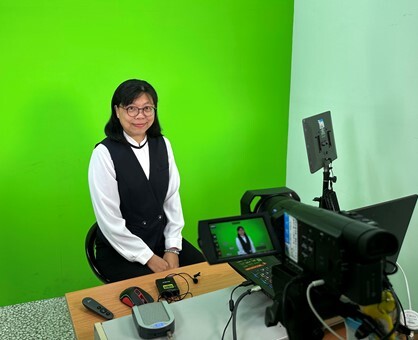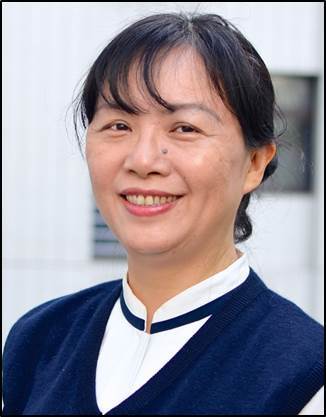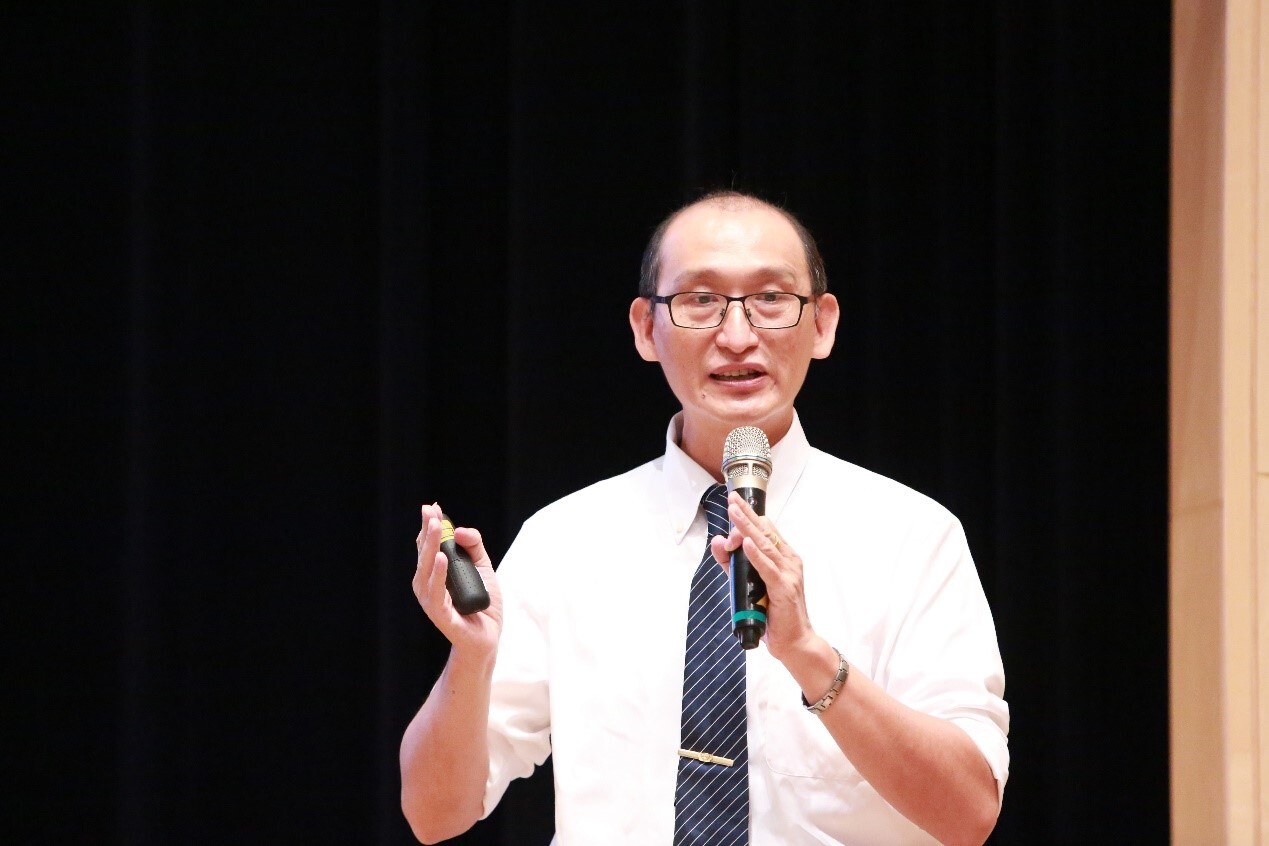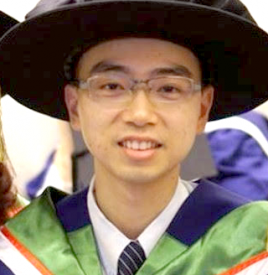- 1.SDG and Sustainability SDG和永續發展在我們目前的生活環境中,重要的是要了解環境所面臨的條件,並從不同的角度探索自己未來的生活,即經濟、社會、環境、公平與和平。 以線性方式討論社會面臨的危機。 然後我們將使用迴圈思維來平衡社會。 In our current living environment, it is important to understand the conditions facing the environment and to explore our own future life from different perspectives, namely economic, social, environmental, equity and peace. The crisis facing society is discussed in a linear way. We will then use circular thinking to balance society.
- 1.104:521-1 Course Description and Learning Objectives 課程描述和學習目標
- 1.205:281-2 Shape the Future that We Want :four Pillar 四大支柱
- 1.308:251-3 Sustainable Development Goal Based Management 基於可持續發展目標的管理
- 1.409:351-4 Learn Wisdom from Nature 從大自然中學習智慧
- 1.508:591-5 What is Sustainable Development ? 什麼是可持續發展?
- 1.608:171-6 Natur Creating Sustainable System 自然創造可持續系統 ?
- 1.709:171-7 Society in Crisis 危機中的社會
- 1.807:551-8 Circular Thinking 循環式思考
- 1.908:311-9 Create Sufficient Stock 建立足够的資源存量
- 1.10📝First unit mini exercise
- 1.11🌏【單元一討論報告】
- 2.The relationship between water resources and the environment 水資源與環境的關係水資源是人類生存和發展的基礎和關鍵因素,而環境是水資源存在和發展的基礎和前提。 人類的活動對水資源和環境的影響也非常大,包括水污染、生態破壞、氣候變化等。 因此,維護水資源和環境的良好狀態,是保障人類生存和發展的必要條件。 為此,需要進行水資源的科學合理利用和保護,實行可持續發展,推進綠色生產和生活方式,以達到人與自然和諧共存的目標。 Water resources are the foundation and key factor for human survival and development, and the environment is the basis and prerequisite for the existence and development of water resources. Human activities have a significant impact on water resources and the environment, including water pollution, ecological destruction, climate change, and more. Therefore, maintaining the good condition of water resources and the environment is a necessary condition for safeguarding human survival and development. To achieve the goal of harmonious coexistence between human beings and nature, it is necessary to utilize water resources reasonably and protect the environment, and to achieve sustainable development.
- 2.103:582-1 Water Management: From Linear to Systemic Thinking 水資源管理:從線性思維到系統性思維
- 2.206:332-2 Making the whole ecosystem work 讓整個生態系統運作起來
- 2.305:382-3 The natural cycle of water 水的自然循環
- 2.406:202-4 When water resources are reduced 當水資源減少時
- 2.504:192-5 The effect of positive and negative feedback in natural systems 自然系統中的正反饋的影響
- 2.607:322-6 Solve the problems we face to create the future we want 解決我們面臨的問題I 以創造我們想要的未來
- 2.710:002-7 Solve the problem at hand (4S+1R) 解決面臨的問題II(4S+1R)
- 2.806:492-8 Strive to participate in solving the water crisis 解決面臨的問題III 設法參與解決水危機
- 2.906:192-9 New Agricultural Practice: Regenerative Agriculture 新型農業實踐:再生農業
- 2.1006:192-10 How to build a sponge city? 如何打造海綿城市?
- 2.1104:522-11 The Importance of Sustainable Water Cycle in Improving Ecosystems and Urban Living
- 2.12📝The second module is a simple mini-exercise
- 2.13🌏【單元二討論報告】
- 3.Shape the Future with Good Economy 塑造未來良好的經濟如何有效地促進永續經濟發展。每個消費者、工作者和生產者藉由多方合作,提高資源利用效率和推動經濟社會的統一,可以有效促進可持續經濟發展。Shape the Future with Good Economy Explore how to effectively promote sustainable economic development. By working together, consumers, workers and producers to improve resource efficiency and promote economic and social cohesion, we can effectively promote sustainable economic development. 探討
- 3.107:013-1 What is Good Economy? 什麼是良好的經濟
- 3.205:293-2 Unsustainable -Economy Consequence 無法永續的經濟後果
- 3.308:033-3 How to effectively promote sustainable economic development 如何有效促進經濟永續發展
- 3.408:143-4 Social economy 社會團體經濟
- 3.508:063-5 Creating Sustainable Economic Development 創造永續經濟發展
- 3.607:413-6 Promoting Sustainable Economic Development: Consumer Cooperatives 推動可持續經濟發展:消費合作社
- 3.7📝The third unit is a simple mini exercise
- 3.8🌏【單元三討論報告】
- 4.Education for Sustainable Development: Service Learning 永續发展教育:志願服務面對現代嚴重的不平等和貧困,服務學習可以讓學生通過與他人合作將學習應用於社區問題。探討服務學習的定義、模式和類型,包括志願服務、社區服務、實地教育和實習專案。 In the face of severe modern inequality and poverty, service learning allows students to apply learning to community issues by working with others. Definitions, models, and types of service learning are explored, including volunteerism, community service, field education, and internship programs.
- 4.107:434-1 From the viewpoint of educators in the university—especially in Tzu Chi 從大學教育者的角度來看
- 4.208:004-2 Service learning can help 服務學習可以幫助
- 4.308:124-3 Model of Service learning we adopted 我們採用的服務學習模式
- 4.408:284-4 Service learning starts from involving 服務學習--從參與開始
- 4.507:294-5 Caring for Rural Children, Creating a Better Future
- 4.605:464-6 TCU Department of Child Development and Family Studies Service Learning 慈濟大學兒童發展與家庭研究系服務學習
- 4.706:024-7 Inspiration and sharing of a service-learning project 一個服務學習專案的啟示與分享
- 4.807:204-8 Stories with love form learners and Receivers 有愛的故事形成學習者和接受者
- 4.905:084-9 Empowerment happening 賦權的發生
- 4.1004:224-10 To sum up 總結
- 4.11📝Simple small of unit 4
- 4.12🌏【單元四討論報告】
- 5.Health and Well-being---USR in Action 健康和福祉 ---USR在行動USR in Action 透過大學社會責任及USR的推動,營造永續健康的社區Through the promotion of university social responsibility and USR, create a sustainable and healthy community.
- 5.106:085-1 University social responsibility 大學的社會責任
- 5.208:355-2 USR in Taiwan and Strategies 臺灣USR和推動策略
- 5.307:195-3-1 SDGs 3 Health and Wellbeing(1) SDGs 3健康與福祉(1)
- 5.403:415-3-2 SDGs 3 Health and Wellbeing(2) SDGs 3健康與福祉(2)
- 5.507:225-4 Active aging-Community services 積極健康樂頤年----社區服務
- 5.6📝This is a simple quiz to see if you understand the content of the module
- 5.7🌏【單元五討論報告】
- 6.Climate Action and Disaster Resilience for Sustainability 氣候行動和抗災能力永續發展The Vicious Cycle of Climate Change 气候变化的恶性循环 這門課程共分為五個部分,首先我們將探討全球暖化和氣候變化的惡性循環,並了解其對環境和社會的影響。其次,透過氣候行動和災害韌性,我們可以找到破解這個惡性循環的可能手段,並且進一步推動可持續發展和災害韌性的走向。第三,我們將介紹慈濟災害管理的四個階段和敘利亞難民在土耳其的案例研究,以展示理解災害韌性概念的重要性。最後,我們將簡要總結本課程,幫助學生將所學知識整理並加以應用。 This course is divided into five parts. First, we will explore the vicious cycle of global warming and climate change and understand its impact on the environment and society. Second, through climate action and disaster resilience, we can find possible ways to break this vicious cycle and further promote sustainable development and disaster resilience. Third, we will introduce the four stages of Tzu Chi's disaster management and a case study of Syrian refugees in Turkey to demonstrate the importance of understanding the concept of disaster resilience. Finally, we will briefly summarize the course to help students organize and apply the knowledge they have learned.
- 6.110:226-1 Vicious Cycle of Global Warming and Climate Change 全球暖化和氣候變遷的惡性循環
- 6.209:126-2 Climate Action and Disaster Resilience I 氣候行動和抗災能力I
- 6.310:486-3 Climate Action and Disaster Resilience II氣候行動和抗災能力 II
- 6.409:496-4Tzu Chi Four Stages of Disaster Relief 慈濟救災的四個階段
- 6.508:386-5 Emergency Relief: Activation 啟動緊急救援
- 6.605:256-6 Case Study: Syrian refugees in Türkiye 案例研究: 土耳其敘利亞難民
- 6.706:446-7 Conclusion 結論
- 6.8📝The first three units are simple mini-exercises
- 6.9🌏【單元六討論報告】
- 7.Final exam 期末測驗
- 7.1📝Final exam
- 7.2💯💯💯修課問卷🍹

SDGs改變我們的世界
邱奕儒, 慈濟大學
2023-08-21 ~
課程長度 5 小時 47 分鐘
影片 48 部
證書費用 NT$ 500
課程摘要:透過SDGs永續發展目標,介紹環境資源的友善利用,以實際案例,讓大家知道,如何減少對環境的負擔,並以愛物惜物的精神,與大自然共存共榮。
另一方面,藉由社區關懷及合作,透過自我志向探索及反思過程中,鼓勵學習者投入志願服務、推動健康促進活動,以及落實社會實踐任務。延伸認識氣候變遷對人類社會的影響,了解如何透過自己的力量為地球環境出一分力。同時,學習應對自然災害的基本知識,如何避免災害和應對災害,增加自身的安全防護能力。
課程目標:了解永續發展目標所需的倫理思想以及 Nature System 如何實現永續理念。另外也將學習如何發展在地經濟,以及如何設計您所在社區的食物和水系統。
另外,在欠乏發展的社區中,如何組織志願者參與服務以及推動健康照顧,也將學習如何與在地民眾合作,增強社區的韌性,以應對未來災難的影響。
課程也著重的全球公民意識,並透過實踐學習的實例,了解身為全球公民,應具備的責任感和服務力。
課程內容:從SDGs發展指標中,連結大自然的系統、教育服務、健康促進計畫、氣候行動與防災等面向,參與全球永續發展議題及關懷實踐行動,也是慈濟大學致力培養學生人道主義與慈悲之心,藉由與在地社區合作,將學習的知識和技能應用於社區和全球健康問題的解決方案。
授課老師:

兒家系吳淑娟老師

護理系蔡娟秀老師

慈濟大學通識教育中心教授 邱奕儒老師

急難救助碩士學位學程 陳榮光
評分標準:
1.需完成所有影片觀看+主題討論報告(6次)才會有成績喔!
2.平時測驗:70% (6次)
3.期末考:25%
4.問卷回饋:5%
邱奕儒
介紹 :
全球永續發展目標教研總中心主任
專長:
生態設計、水資源與環境工程、合作經濟
教學相關榮譽與獲獎:
慈濟大學 105 學年度「校級優良教師」
美國史丹福大學設計學院 D.School 設計思考 (Design Thinking)培訓認證教師
樸門永續設計專業認證教師 (澳洲 Bluemountain Permaculture
Institute,Certificated by Rosemary Morrow )
亞太地區國際 園藝治療協會之榮譽園藝治療治療師認證
行政院環保署授予環境教育人員認證
教育部環境教育輔導團東區專家顧問
美國史丹福大學設計學院 D.School 設計思考 (Design Thinking)培訓認證教師
樸門永續設計專業認證教師 (澳洲 Bluemountain Permaculture
Institute,Certificated by Rosemary Morrow )
亞太地區國際 園藝治療協會之榮譽園藝治療治療師認證
行政院環保署授予環境教育人員認證
教育部環境教育輔導團東區專家顧問
教學相關獎勵計畫:
榮獲教育部 107 年大學社會責任 USR 正式計畫 「慈濟大學食在永續計畫」計畫主持人
榮獲農委會 107 年青年回留農村創新研究示範計畫 花蓮樸門永續生活協會 )計畫主持人
榮護教育部榮護教育部106年大學社會責任USR試辦計畫--「慈濟大學食在永續計畫」計畫主持人
榮獲農委會水土保持局榮獲農委會水土保持局106106年「大專院校農村實踐共創示範計畫」
榮獲農委會 107 年青年回留農村創新研究示範計畫 花蓮樸門永續生活協會 )計畫主持人
榮護教育部榮護教育部106年大學社會責任USR試辦計畫--「慈濟大學食在永續計畫」計畫主持人
榮獲農委會水土保持局榮獲農委會水土保持局106106年「大專院校農村實踐共創示範計畫」
- 專長
- 電子郵件
- chiuyr@gms.tcu.edu.tw
- 電話
- 公司
- 單位
- 慈濟大學
- 職稱
- 校內教職員
- 教育程度
- 未設定
- 學歷
